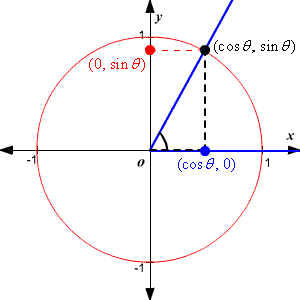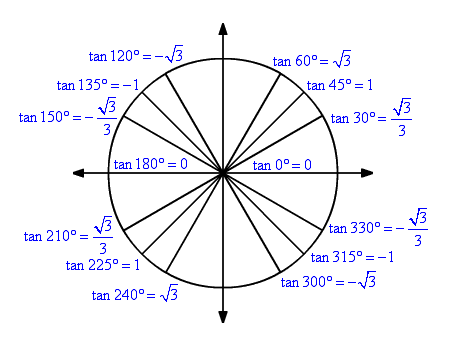Math Homework. Do It Faster, Learn It Better.
Tangent Function
The tangent function is a periodic function which is very important in trigonometry.
The simplest way to understand the tangent function is to use the unit circle. For a given angle measure draw a unit circle on the coordinate plane and draw the angle centered at the origin, with one side as the positive -axis. The -coordinate of the point where the other side of the angle intersects the circle is and the -coordinate is .

There are a few sine and cosine values that should be memorized, based on triangles and triangles. Based on these, you can work out the related values for tangent.
|
|
|
|
Note that:
- for angles with their terminal arm in Quadrant II, since sine is positive and cosine is negative, tangent is negative.
- for angles with their terminal arm in Quadrant III, since sine is negative and cosine is negative, tangent is positive.
- for angles with their terminal arm in Quadrant IV, since sine is negative and cosine is positive, tangent is negative.

You can plot these points on a coordinate plane to show part of the function, the part between and .

For values of less than or greater than you can find the value of using the reference angle .
The graph of the function over a wider interval is shown below.

Note that the domain of the function is the whole real line and the range is .



